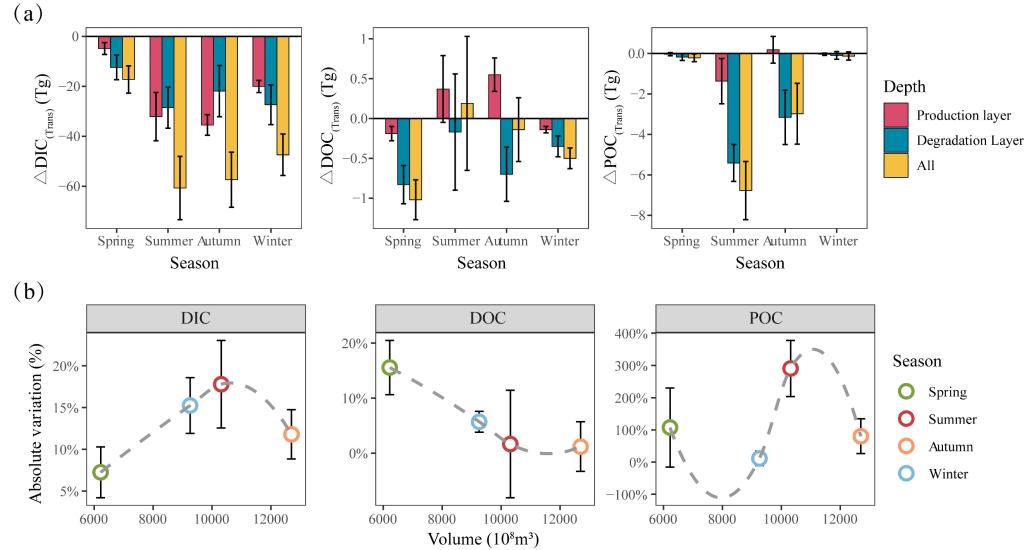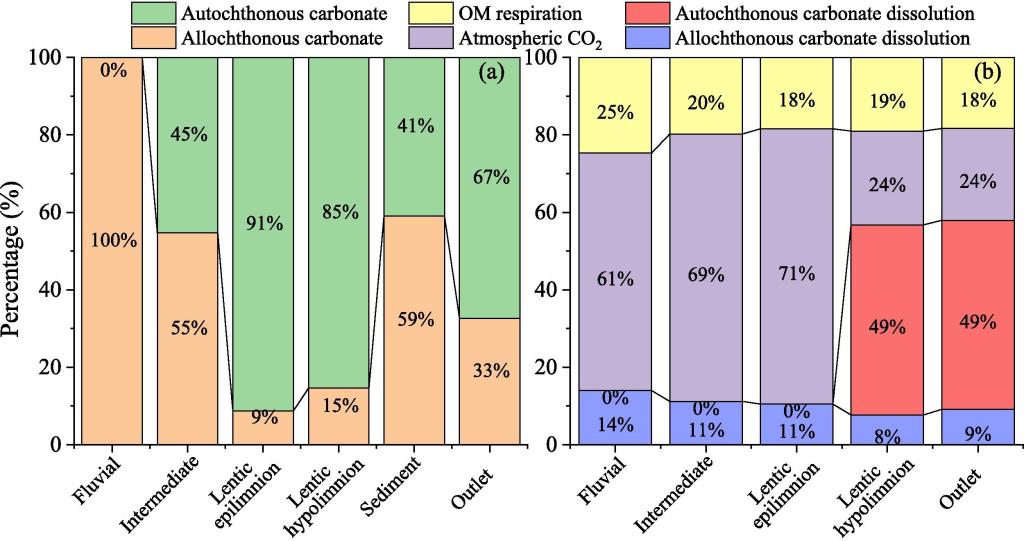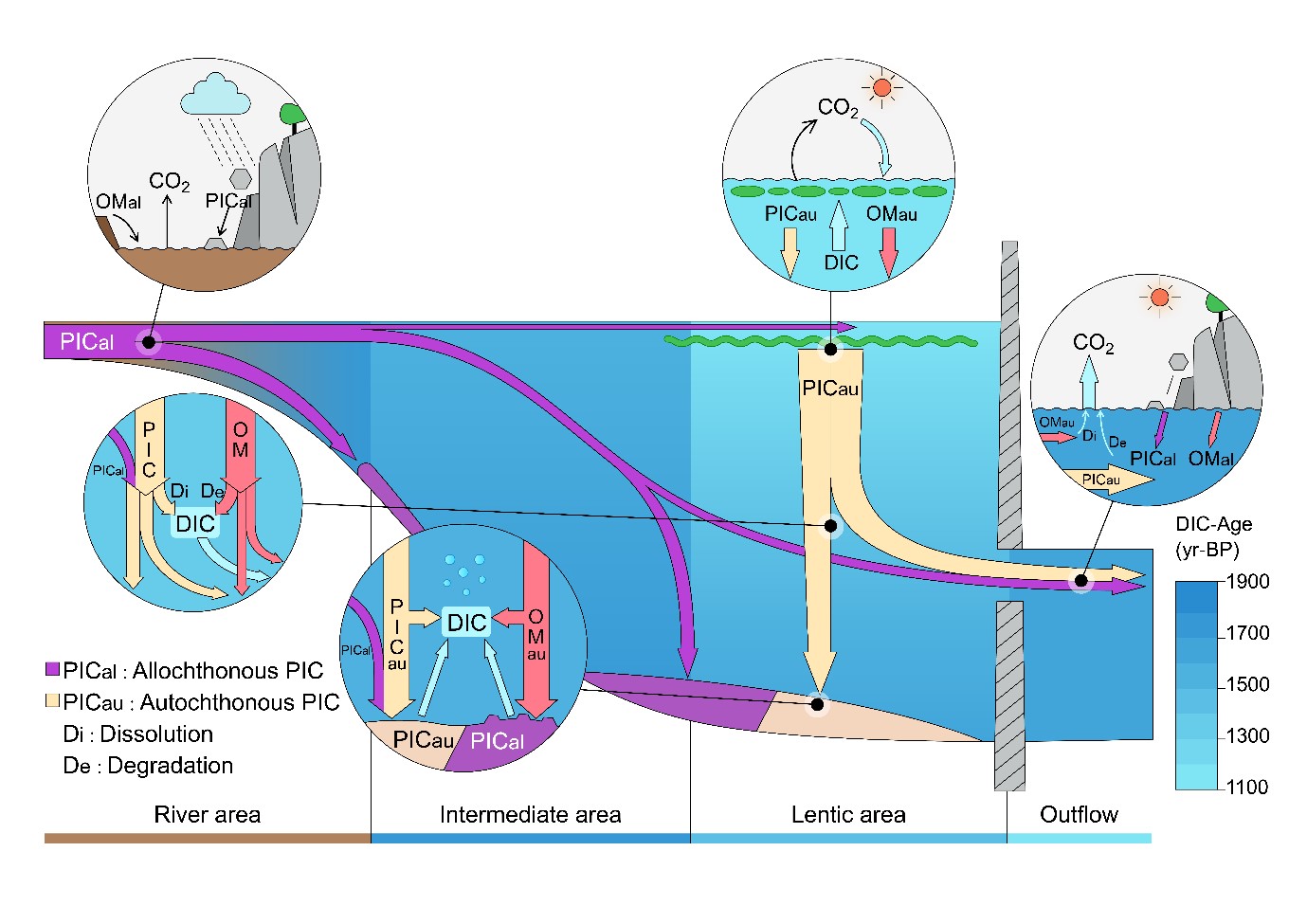The global carbon cycle has been dramatically altered by anthropogenic activities and impacts global climate change. Among them, reservoir construction is one of the most representative means of anthropogenic modification of the natural environment. While reservoirs provide economic benefits to society in terms of hydroelectric power generation, freshwater resources and fish farming, they also carry unnoticeable environmental impacts, such as eutrophication and greenhouse gas emissions, attracting wide attention. Statistically, nearly 70% of the world's major rivers are dammed, and a series of changes in hydrodynamics, hydrochemistry and ecosystem structure and function have occurred in dammed rivers. Southwest China accounts for 68% of the exploitable hydropower in China, and the region is and will be a priority area for river damming now and in the future. However, there is a lack of research on the carbon cycle of deep reservoirs. This study investigates dissolved inorganic carbon (DIC), dissolved organic carbon (DOC), particulate inorganic carbon (PIC), and particulate organic carbon (POC) in several typical southwestern karstic large deep reservoirs in detail to address the above question.

Fig. 1 Carbon turnover processes of different forms of carbon in reservoirs: (a) the amount of carbon turnover of dissolved inorganic carbon, dissolved organic carbon and particulate organic carbon in different seasons; (b) the percentage of carbon turnover of dissolved inorganic carbon, dissolved organic carbon and particulate organic carbon along with hydrological changes.
The results showed that the carbon turnover processes in reservoirs were complexly controlled. The amount of different forms of carbon turnover is mainly regulated by seasonal changes, while their intensity is mainly regulated by hydrological regulation. It is estimated that around 23.0% of DIC, 20.5% of DOC and most of the POC will be used by primary production processes, degraded by microbial processes and sunk by gravity in reservoirs. The considerable organic matter will be buried in reservoirs as aged DOC and sink POC during reservoir water operation, suggesting that reservoirs are modern important carbon sinks in watersheds. Their importance needs to be fully considered in the carbon cycle of the source and sink of watershed systems.

Fig. 2 Autochthonous and allochthonous PIC fractions in different regions of the Hongjiadu river-reservoir system and the percentage contribution to the DIC of the water column.
The multi-carbon isotopes (d13C & D14C) and nascent mineral electron microscopy analysis showed that more than 85% of PIC in the water column of the Stillwater section were generated by the photosynthesis-induced autogenous PIC. This phenomenon indicates that although PIC is dissolving in the deep water layer of the reservoir, the production of autogenous PIC is over than their dissolution, resulting in the continuous accumulation of large amounts of autogenous PIC in the reservoir sediments. The results of this study break through the traditional understanding that PIC in the watershed are mainly derived from rock debris and do not participate in the current carbon cycle, suggesting that our study of the river-reservoir carbon cycle needs to be strengthened in order to understand the carbon cycle scientifically. The above findings further clarify the reservoir carbon cycle process and carbon source-sink effects, provide essential data and theoretical support for anthropogenic regulation of reservoir carbon cycle and environmental changes, and a scientific basis for accurate assessment of the carbon cycle of large deep reservoirs and basin carbon balance in the future.

Fig. 3 Schematic diagram of carbon enhancement behavior of autochthonous PIC in karst large-deep reservoirs
The related findings were published in Water Research and Journal of Hydrology, which are well-known journals in the environmental field. This work was co-funded by the National Key R&D Program of China (2016YFA0601002), and the National Science Foundation for Distinguished Young Scholars of China (41925002). The related papers are as follows.
Yi Y, Li S-L, Zhong J, et al. The influence of the deep subtropical reservoir on the karstic riverine carbon cycle and its regulatory factors: insights from the seasonal and hydrological changes. Water Research, 2022: 119267. https://doi.org/10.1016/j.watres.2022.119267.
Wang W, Li S-L, Zhong J, et al. Carbonate mineral dissolution and photosynthesis-induced precipitation regulate inorganic carbon cycling along the karst river-reservoir continuum, SW China. Journal of Hydrology, 2022: 128621. https://doi.org/10.1016/j.jhydrol.2022.128621.